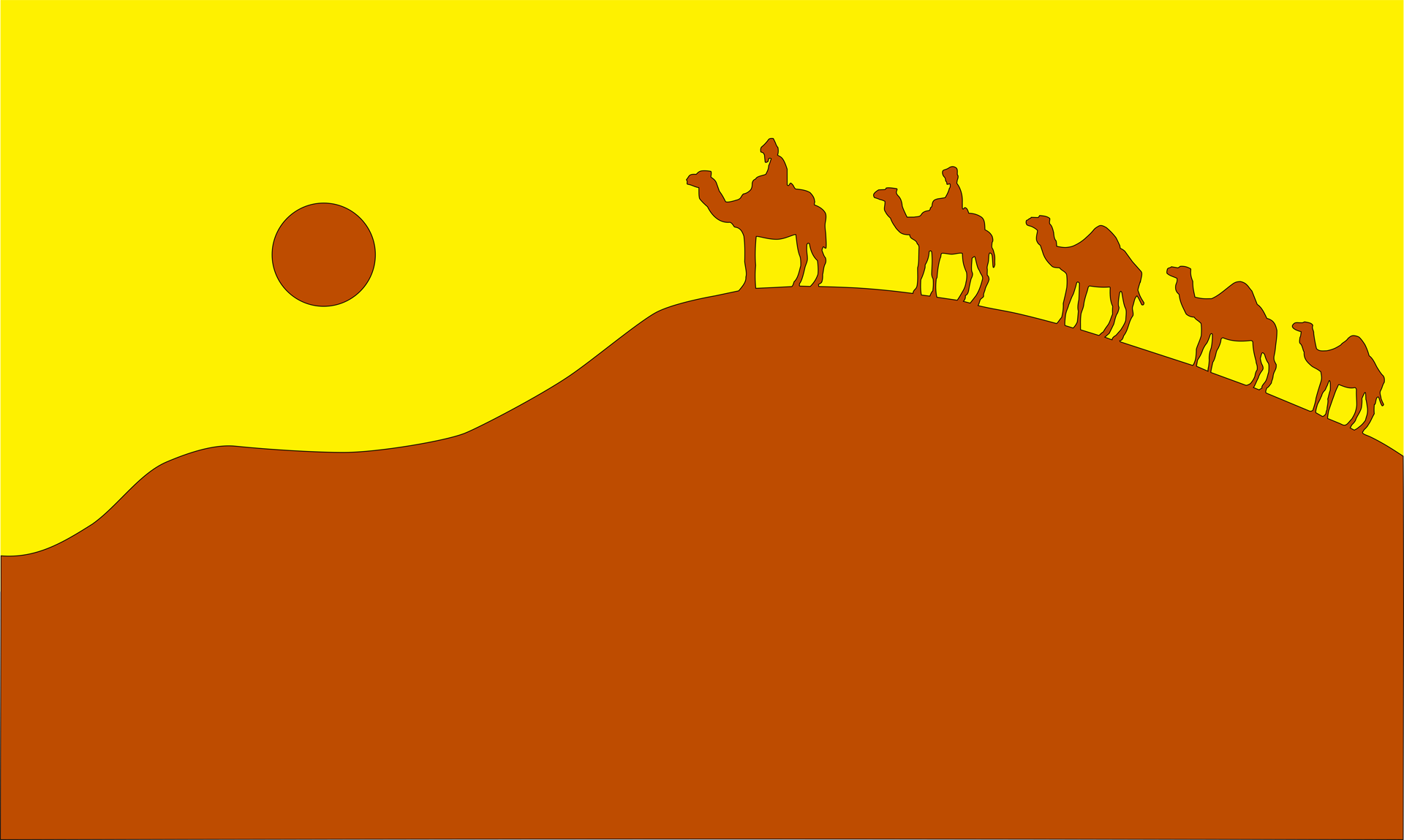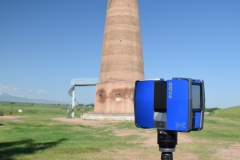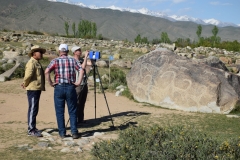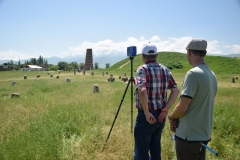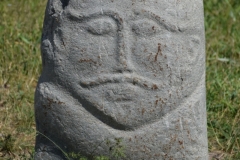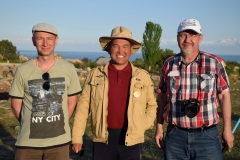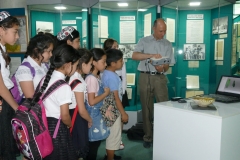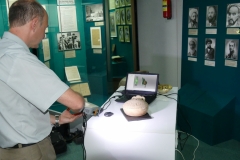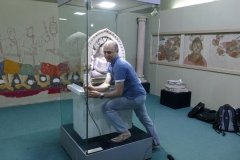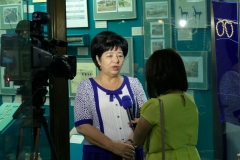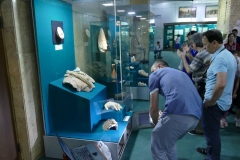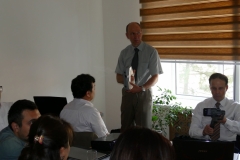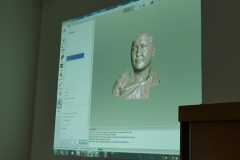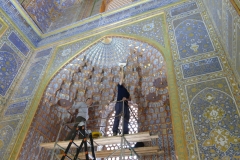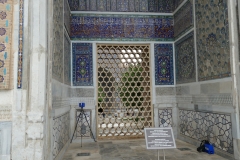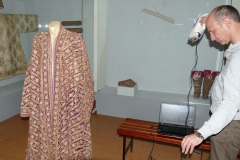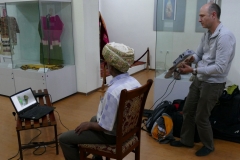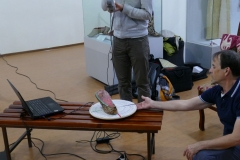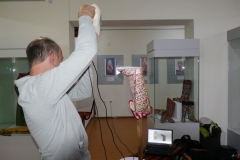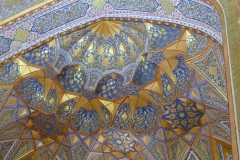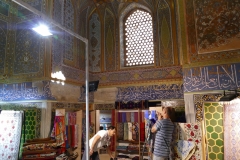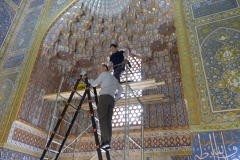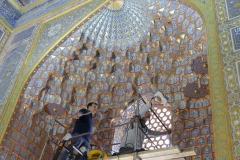3rd Scientific Expedition of the Lublin University of Technology to Central Asia. Part 1 – Kyrgystan. May 13-17, 2019
The first stage of the third expedition was Kyrgyzstan. Employees of the Institute of Computer Science – participants of the expedition, in the persons of prof. Jerzy Montusiewicz, dr inż. Marek Miłosz and dr inż. Jacek Kęsik, scanned the tower-minaret of Burana and a field with stone carvings in the remains of a medieval (X-XII century) city of Baasagun near Bishkek – the capital of Kyrgyzstan. The sculptures were created in the sixth and tenth century AD. The entire museum is under the patronage of UNESCO.
In the area of Lake Issyk Kul in the town of Cholpon-Ata, petroglyphs – rock drawings were scanned. Most of them were created 3-4 thousand years ago. They form the “Petroglyphs of Cholpon-Ata” museum.
The field with stone carvings and petroglyphs was scanned experimentally because it was the first time this type of work was done.
The team also made a series of lectures for students and staff at the Kyrgyz Technical University in Bishkek.
3rd Scientific Expedition of the Lublin University of Technology to Central Asia. Part 2 – Tashkent, Uzbekistan. May 17-20, 2019
The second stage of the 3rd Scientific Expedition of the Lublin University of Technology to Central Asia was Tashkent – the capital of Uzbekistan. Employees of the Institute of Computer Science – participants of the expedition, in the persons of Prof. Jerzy Montusiewicz, Dr. Marek Miłosz, and Dr. Jacek Kęsik, scanned artefacts at the National Museum of the History of Uzbekistan. Probably the most interesting artefact in this museum is a stone sculpture – an altar, depicting the Buddha surrounded by praying monks. Stone Buddha is dated to the 1st-3rd century and was found in the Fayaztepa area in the village of Stary Termez. Work in the museum was possible thanks to the support of the museum managers: Prof. Zhannat Ismailova and Prof. Otabek Aripdjanov. During the expedition, 3D scans of 32 objects in the museum were made, acquiring over 30 GB of data. The oldest scanned artifact (clay pot) was about 7,000 years old.
The team also took part in a seminar at the Uzbek Academy of Sciences. The topic of the seminar was “3D technologies in cultural heritage”. During it, the technologies used during the expeditions of the Lublin University of Technology, the results so far and contribution to the popularization of the Central Asia region through the multimedia exhibition were presented. The “3D Digital Silk Road” portal was also presented (silkroad3d.com). The Academy of Sciences of Uzbekistan has placed a report about seminar on its website (http://tmarkaz.uz/?p=1898&lang=ru). Contacts have been established with the employees of the Academy, in particular with prof. Mirzokhid Rakhimov and his team. The seminar was organized by Aziz Mullaev, PhD student at the academy.
3rd Scientific Expedition of the Lublin University of Technology to Central Asia. Part 3 – Samarkand, Uzbekistan. May 20-25, 2019
The third stage of the 3rd Scientific Expedition of the Lublin University of Technology to Central Asia was the city of Samarkand in Uzbekistan. Employees of the Institute of Computer Science – participants of the expedition, in the persons of prof. Jerzy Montusiewicz, dr inż. Marek Miłosz and dr inż. Jacek Kęsik, scanned stalactites – the ornaments of the apseal of Registan mosques and the costumes of the sovereigns of the nineteenth century states – khanats from Central Asia.
Stalactites are characteristic decorations of ceiling niches of Islamic culture, referring to stalactites in caves. They are related to the revelations of the Mohamed prophets, who obtained them while in the cave. Their design and decorating in Registan are unique on a global scale.
Scanning 3D robes of Bukhara’s emir and other elements of his outfit (turban, shoes) was a unique and experimental activity, due to the materials that were used to make them. Experts estimate that the gold thread used in the outfit weighs over 2.5 kg, and silver is much more.
